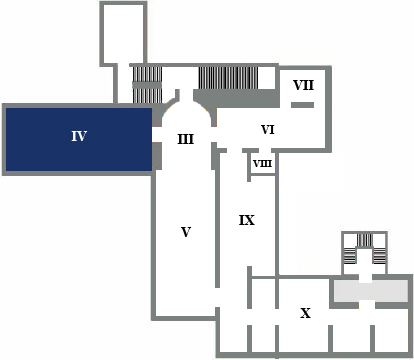
The painting section of the Lia collection begins in Room IV. This collection, made up of about 200 works, gives an exciting overview of Italian figurative painting, ranging from the 13th/14th-century panels of Room IV to the 18th-century canvases in Room X.
Each of the mediaeval panels was very often originally part of larger pictorial complexes, called polyptyches. The technique used involved elaborate preparation of the panel, ending with the application of gold leaf to symbolise the light of God. The actual painting was done in tempera.
|
|
Lippo di Benivieni
Lamentation over the body of Christ
end of 13th - beginning of 14th century
This small panel, attributed to Lippo di Benivieni, an artist working in Florence between 1296 and 1327, narrates the Lamentation over the body of Christ.
The cross, flanked by two mourning angels, stands out from the gold ground, which spreads over the whole of the upper part. Two bare, lifeless, rocky hills converge at the foot of the cross, marking out the group of mourners who are lamenting the dead Christ laid across the Virgin's lap. In the foreground, a huge crack in the earth seems to symbolise the break between God and Man following Christ's death.
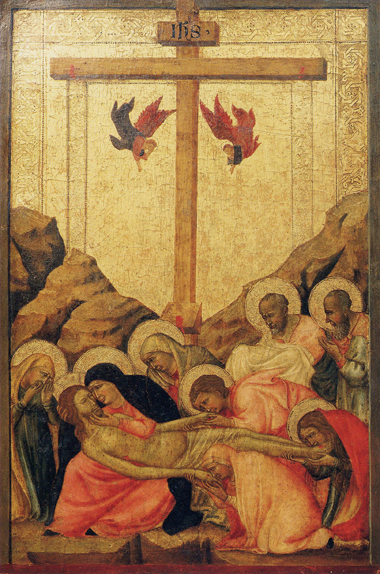
|
|
Bernardo Daddi
St. John the Baptist
c. 1320
The panel, which was originally part of a polyptych, whose components are partly preserved at the National Museum of Parma, was painted around 1320 by Bernardo Daddi. The figure of St. John the Baptist stands out from the gold ground. He is portrayed as a real man, with ruffled hair and unkempt beard, his face and body showing signs of the physical hardships of the wilderness. He is dressed in the camel- hair tunic, his iconographical attribute, and wrapped in a red mantle, an omen of Christ's death.
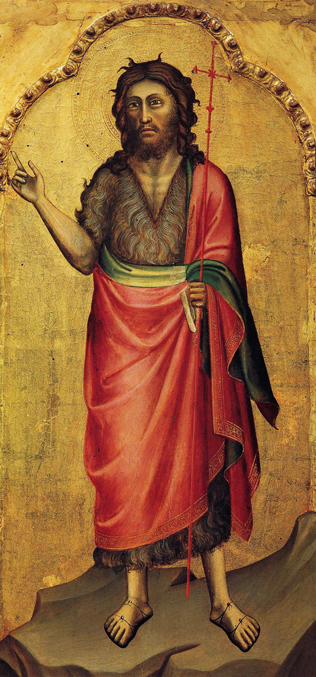
|
|
Pietro Lorenzetti
Vir dolorum
1320-1325
The panel, framed in a kind of original decorated border, is the work of Pietro Lorenzetti and datable to 1320-1325. It was probably part of a particularly large predella which in turn belonged to a large polyptych; this is now lost, but some fragments of it can still be traced. Inside the quadrifoil space and on a gold ground Christ is shown in his guise of Vir dolorum, laid in the sepulchre with his head lolling on his right shoulder.
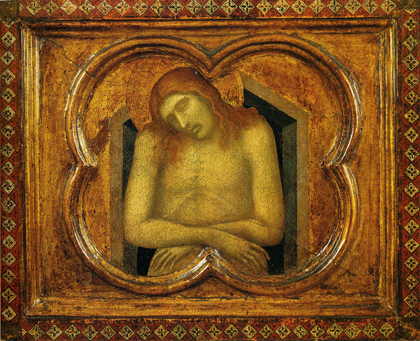
|
|
Pietro Lorenzetti
St. John the Evangelist
First half of 14th century
This panel painting is considered to be a late work of Pietro Lorenzetti and datable to the 1340's. The strongly volumetric and vigorous figure of St. John the Evangelist stands out from the gold ground which is pierced to trace the halo. Lorenzetti describes him as a real man, marked by life and age. His hair is thin and the wrinkles on his forehead and at the sides of his eyes are clearly shown.
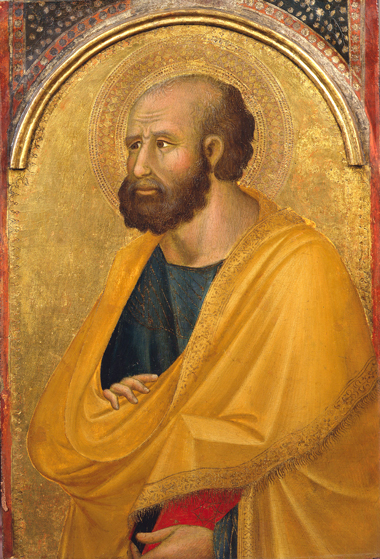
|
|
Barnaba da Modena
Crucifixion
c. 1370
This panel, originally part of a diptych, portrays the Crucifixion and was painted by Barnaba da Modena in about the ninth decade of the sixteenth century. The painting is divided up into isolated narrative episodes which seem to have an upward succession. The cross stands out on its own, surmounted by a tree in whose foliage can be seen the mystic pelican which tears its own breast in order to feed its children, a symbol of Christ's supreme sacrifice.

|
|
Bottega di Simone Martini
Crucifixion
mid- 14th centur
This panel showing the Crucifixion is attributed to the circle of Simone Martini and datable to 1345-1350. The painting, which is exceptionally well preserved and of very high quality, was in all probability the right-hand part of a diptych. The scene on a gold ground is enlivened by soldiers in lavish armour who look incredulously on the scene of martyrdom or dismount to help the swooning Virgin. Lightly-traced angels, seeming almost to have materialised from Christ's blood, swoop down in distress towards the cross.
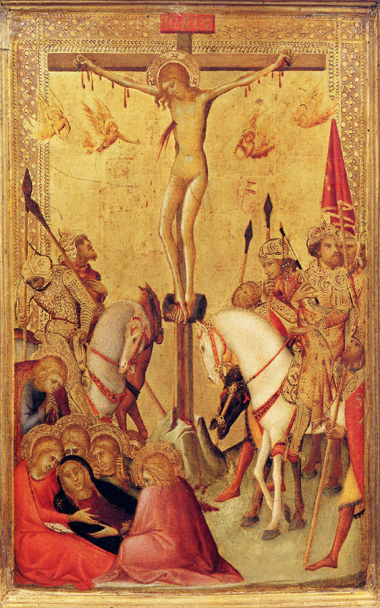
|
|
|
|